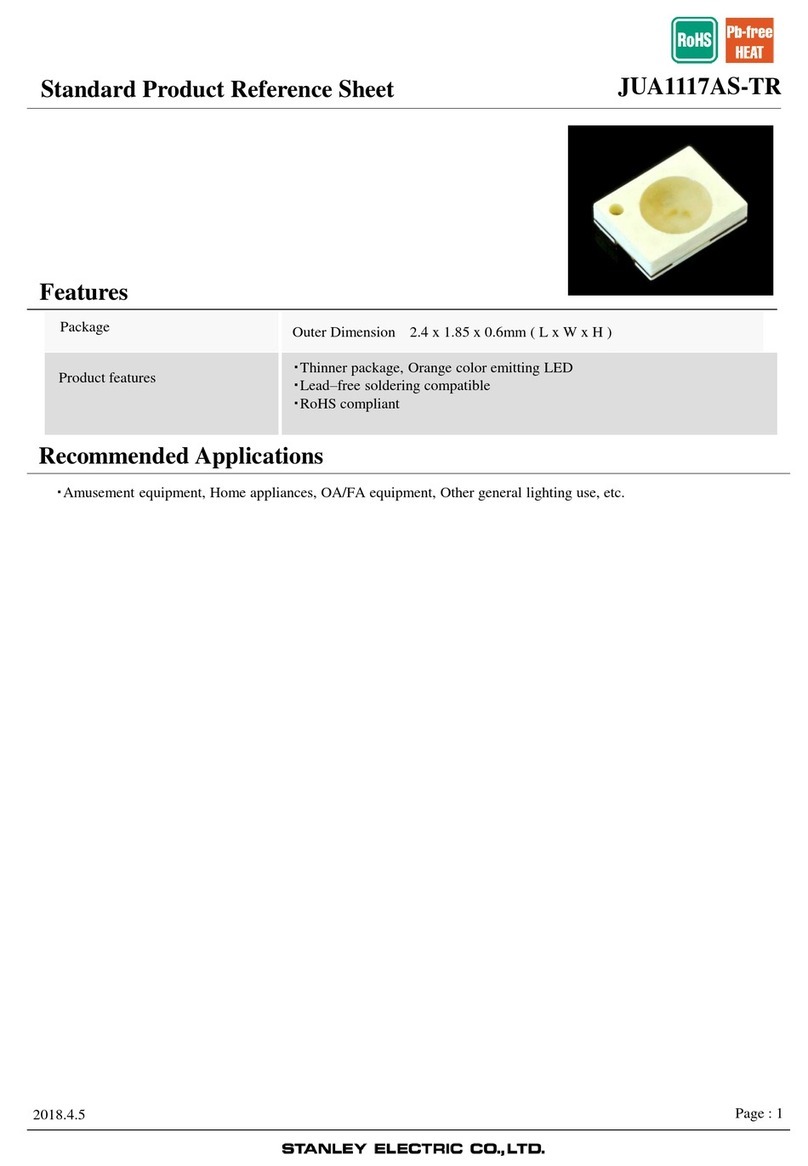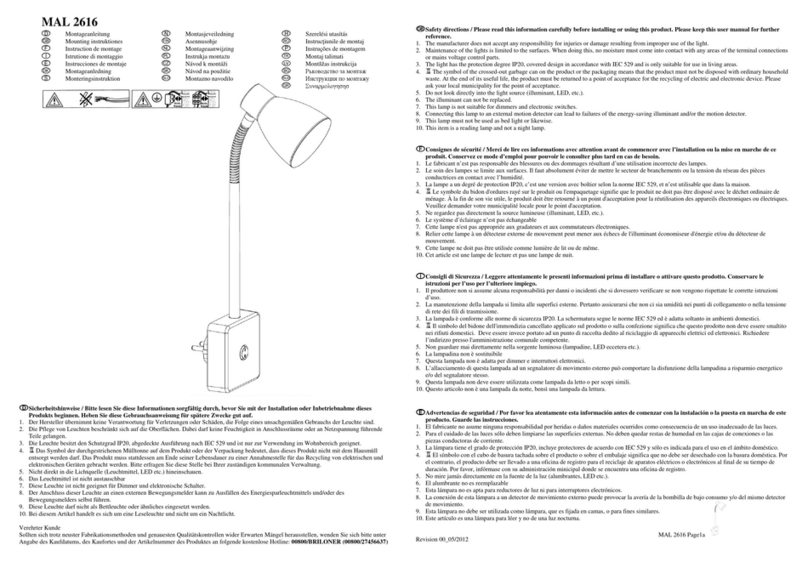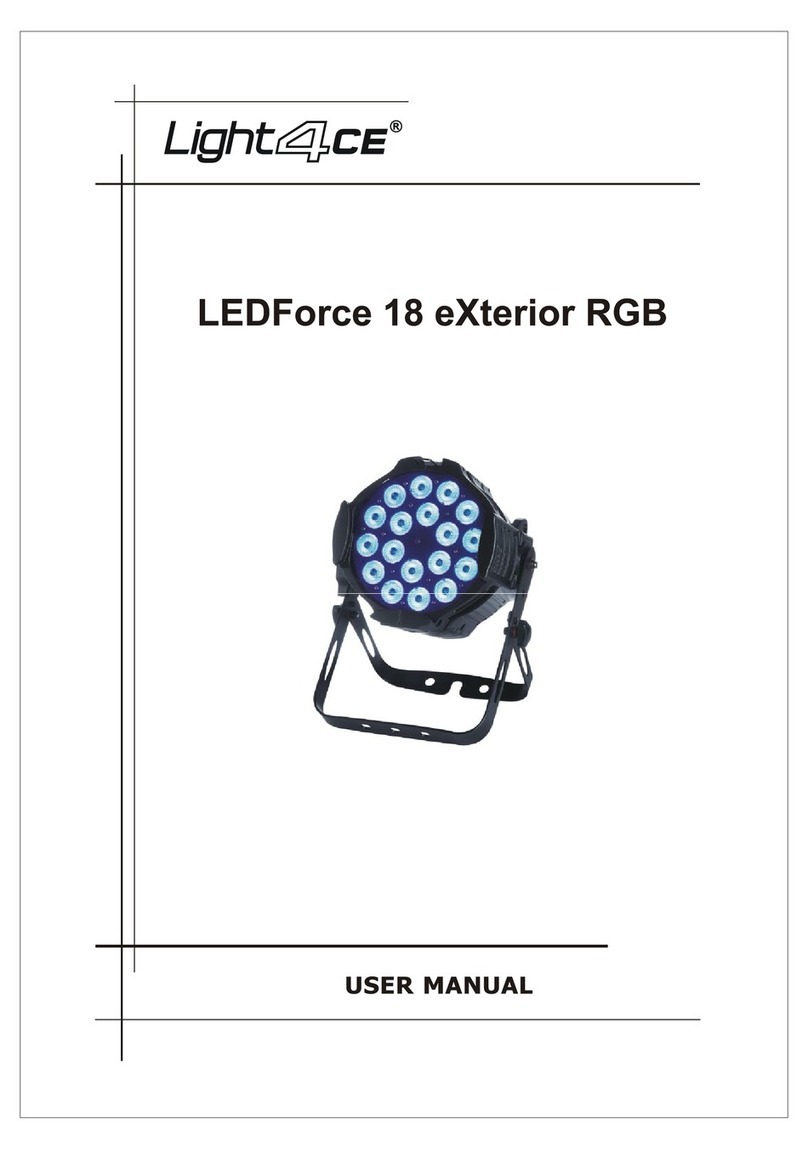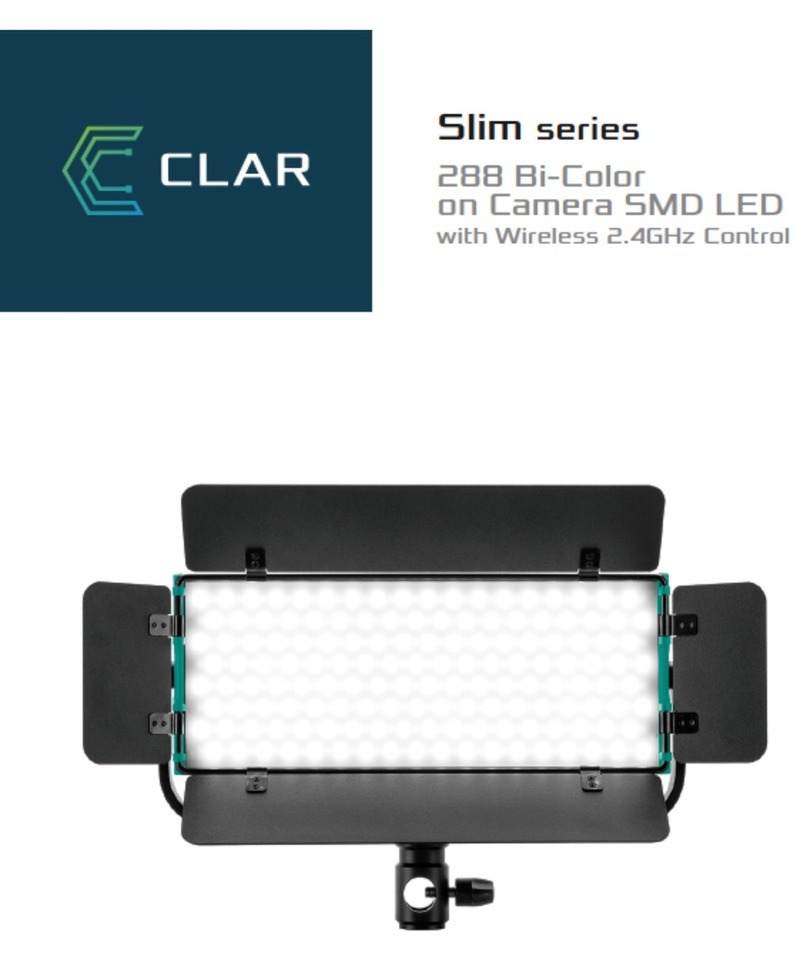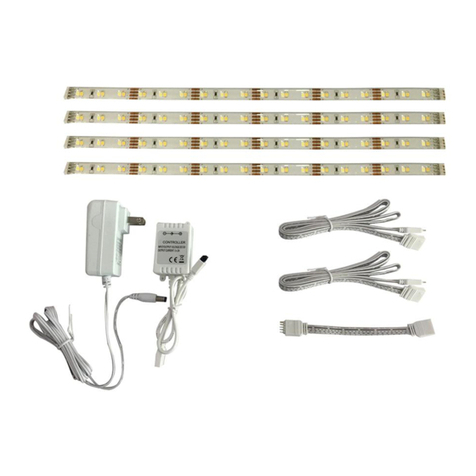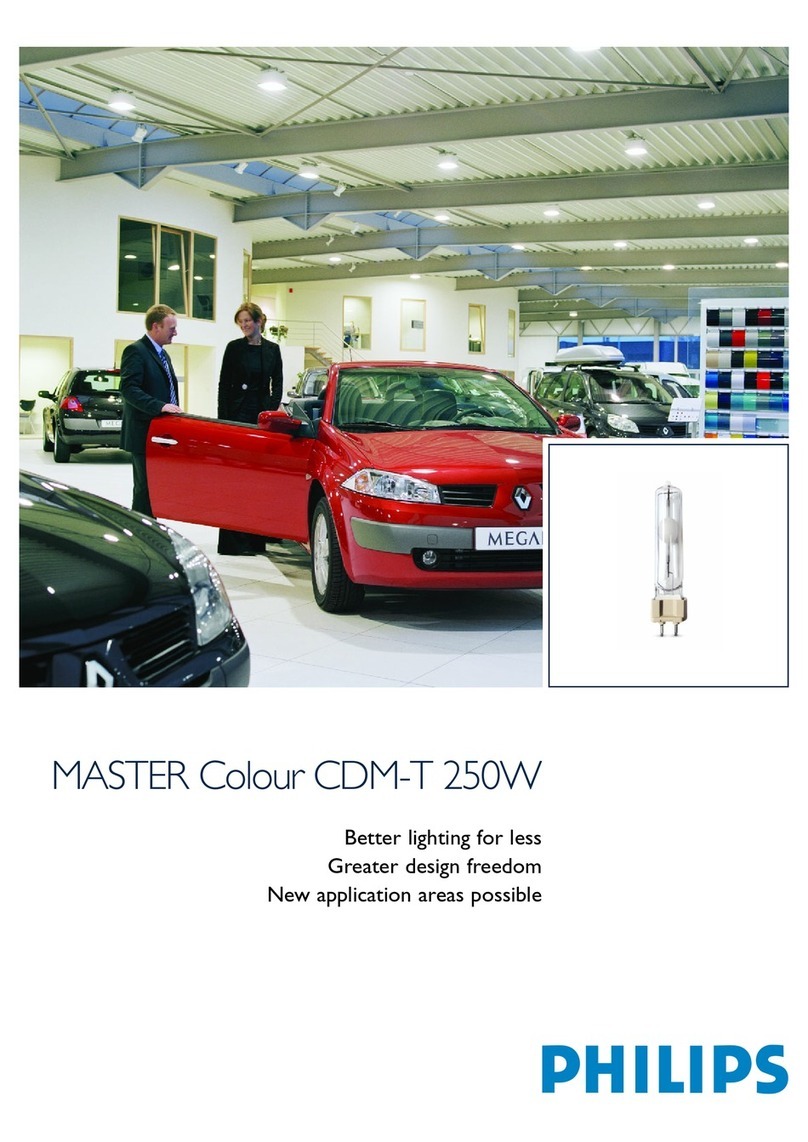Stanley Electric ARGB1318FS-TM User manual

ARGB1318FS-TM
3in1 Side Viewing (Right Angle) type
Out dimension 4.5 ×1.15 ×1.35mm ( L x W x H )
・RGB tri-color emitting LED
・Lead–free soldering compatible
・RoHS compliant
Cellular Phone, Home Appliances, Amusement Equipment, Other General Applications
Standard Product Reference Sheet
Package
Features
Product features
Recommended Applications
2013.2.11 Page : 1

ARGB1318FS-TMOutline Dimensions
Unit :mm
Weight :11.5mg
Tolerance :±0.2
Recommended Pad
Unit:mm
SYMBOL PART NAME MATERIALS QTY.
① LED Die AlGaInP,InGaN 3
② Substrate Glass Fabrics 1
③ Encapsulant Silicone Resin 1
2013.2.11 Page : 2

ARGB1318FS-TM
InGaN
LED Die (3)LED Die (1) LED Die (2)
AlGaInP InGaN
BLUE
Material
Emitting Color
Lens Color
RED
MILKY WHITE
GREEN
Derate Linearly
From 60℃
Current Derate
Linearly
℃
ΔI
FRM
-40 ~ +100
5VV
R
55
2.502.50 2.50
P
d
100
ITEM
Power Dissipation
Total Value of Power Dissipation
T
stg
Pulse
(1 chip emitting)
I
F
LED Die (2)
90
LED Die (3)
-40 ~ +85
Operating Temperature
Forward Current (1 chip emitting)
I
F
℃
53
100
mA
243 ※1
30
30 30
100
30
Storage Temperature
T
opr
Reverse Voltage
mA/℃
LED Die (1)
mW
25 15
SYMBOL
mA
mW
mA
100I
FRM
UNITS
0.750 0.750 0.750
Forward Current
(3 chips emitting)
Repetitive Peak Forward Current
P
d
mA/℃
DC
(2 or 3 chips emitting)
0.75 0.625 0.375 mA/℃
DC
(1 chip emitting)
ΔI
F
【Absolute Maximum Ratings 】
※1. Forward Current should not exceed Max. Total Value of Power Dissipation (3 chips emitting).
See technical data for Total Value of Power Dissipation at 60 ℃or more.
Notes
※2. IFRM Conditions :Pulse width ≦1ms, Duty ≦1/20
Specifications
【Product Overview 】
(Ta=25℃)
2013.2.11 Page : 3
※2

ARGB1318FS-TM
Specifications
【Electro-Optical Characteristics 】
nm
mcd
1.7
-
Forward Voltage
Luminous Intensity
Dominant Wavelength
V
F
I
V
-
λdI
F
= 23mA
50
-
TYP. MAX. UNITS
2.1
500
V
-
-
CONDITIONS MIN.
622
I
F
= 23mA
I
F
= 23mA
ITEM SYMBOL
2.8
μAReverse Current I
R
V
R
= 5V -
LED Die (1) RED (Ta=25℃)
LED Die (2) GREEN
LED Die (3) BLUE
(Ta=25℃)
(Ta=25℃)
2013.2.11 Page : 4
μAReverse Current I
R
V
R
= 5V -
I
F
= 23mA
ITEM SYMBOL
3.7
I
F
= 23mA
MIN.
525
CONDITIONS TYP. MAX. UNITS
3.0
1,100
V
-
-
50
-
2.6
-
Forward Voltage
Luminous Intensity
Dominant Wavelength
V
F
I
V
-
λdI
F
= 23mA nm
mcd
μAReverse Current I
R
V
R
= 5V -
I
F
= 14mA
ITEM SYMBOL
3.5
I
F
= 14mA
MIN.
472
CONDITIONS TYP. MAX. UNITS
2.9
200
V
-
-
50
-
2.4
-
Forward Voltage
Luminous Intensity
Dominant Wavelength
V
F
I
V
-
λdI
F
= 14mA nm
mcd
All LED Emitting (Ta=25℃)
Chromaticity Coordinates
RED : I
F
=23mA
GREEN : I
F
=23mA
BLUE : I
F
=14mA
‑
‑
‑
‑
Luminous Intensity Iv
y
‑
TYP. MAX. UNITS
1,800
0.310
mcd
0.315
‑
CONDITIONS MIN.ITEM SYMBOL
‑
x‑

ARGB1318FS-TM
Specifications
2013.2.11 Page : 5
0.320
H0.290 0.240 0.290 0.290 0.340 0.310 0.340 0.260
0.2700.310 0.390 0.320 0.390
0.2400.280 0.290 0.290 0.290
0.280
0.290 0.360 0.390 0.370 0.390
0.260 0.340
0.230 0.240
y
0.360
0.420
0.340
0.360
0.410
0.340
0.390 0.390
x
0.290
C
D
0.340
F0.340
J0.340
G0.240
xy
0.340 0.290
0.240 0.380
0.410
0.330
0.310 0.340
y
0.340
xx
0.340
0.240
0.290
y
0.240
B0.290
E
0.360 0.290
0.340
0.340
RANK LeftDown LeftUp RightUp
RED
(IF=23mA)
GREEN
(IF=23mA)
BLUE
(IF=14mA)
A0.240 0.330 0.290 0.390 0.290
RightDown CONDITONS
0.290
0.340
0.340
0.310
0.3700.390
0.290
0.20
0.25
0.30
0.35
0.40
0.45
0.20 0.25 0.30 0.35 0.40
y
x
A
D
G
B
E
H
C
J
F
Chromaticity coordinates is sorted out into the following chat.
【Sorting Chart for Chromaticity Coordinates】
Above chromaticity coordinates sorting values are values measured on Stanley’s production line.
(Tolerance : ±0.02)
Notes

ARGB1318FS-TM
Spatial Distribution
Conditions: Ta=25℃, IF=20mA
Wavelength vs. Relative Intensity
Conditions : Ta=25℃, IF=20mA
Wavelength : (nm)
Relative Intensity
Technical Data(LED Die 1: RED)
Relative Intensity : (%)
2013.2.11 Page : 6
0.0
0.2
0.4
0.6
0.8
1.0
1.2
380 430 480 530 580 630 680 730 780
0
50
100
-100 -50 0 50 100
-30
-60
-90
60
30
0
90
x
y
x Direction
y Direction

ARGB1318FS-TM
0.1
1.0
10.0
-40-200 20406080100
0.0
0.5
1.0
1.5
2.0
0 10203040
1
10
100
1.0 1.5 2.0 2.5 3.0
1
10
100
110100
. Duty Cycle vs. Maximum Forward Current
Duty Ratio :(%)
Forward Current vs. Relative Intensity
Condition: Ta = 25℃
Forward Current : IF(mA)
Ambient Temperature vs. Relative Intensity
Condition : IF=23mA
Ambient Temperature : Ta (℃)
Relative Intensity
Forward Voltage vs. Forward Current
Condition: Ta = 25℃
Forward Voltage :VF(V)
Forward Current : IF (mA)
Forward Current : IF MAX. (mA)
Page 7
2013.2.1
Technical Data(LED Die 1: RED)
Relative Intensity

ARGB1318FS-TM
1
10
1 10 100 1,000 10,000 100,000
50Hz
100Hz1kHz
10kHz
3.3
0
20
40
60
80
100
120
-40-200 20406080100
Duty=10%
Duty=20%
Duty= 5%
Duty=50%
0
10
20
30
40
50
60
-40-200 20406080100
DC
0
20
40
60
80
100
120
140
-40-200 20406080100
Ambient Temperature vs. Maximum Forward Current
Repeatition Frequency:f≧50Hz
Ambient Temperature :Ta (℃)
Ambient Temperature vs. Maximum Forward Current
Repeatition Frequency:f≧50Hz
Ambient Temperature : Ta (℃)
Ambient Temperature vs. Power Dissipation
Ambient Temperature : Ta (℃)
Pulse Width vs. Maximum Tolerable Peak Current
Condition : Ta=25℃
Pulse Width : tw (μsec)
Page 8
2013.2.1
Technical Data(LED Die 1: RED)
Forward Current : IF MAX. (mA)
Forward Current : IF MAX. (mA)
IFpeak MAX./ IFDC MAX.
Power Dissipation Pd (mW)

ARGB1318FS-TM
Spatial Distribution
Conditions : Ta=25℃, IF=20mA
Wavelength : (nm)
Relative Intensity
Technical Data(LED Die 2: GREEN)
Relative Intensity : (%)
Wavelength vs. Relative Intensity
Conditions : Ta=25℃, IF=10mA
2013.2.11 Page : 9
0.0
0.2
0.4
0.6
0.8
1.0
1.2
380 430 480 530 580 630 680 730 780
0
50
100
-100 -50 0 50 100
-30
-60
-90
60
30
0
90
x Direction
y Direction
x
y

ARGB1318FS-TM
0.0
0.5
1.0
1.5
2.0
0 5 10 15 20 25 30 35
0.1
1.0
10.0
-40-200 20406080100
1
10
100
110100
1
10
100
1.5 2.0 2.5 3.0 3.5 4.0 4.5
. Duty Cycle vs. Maximum Forward Current
Duty Ratio :(%)
Forward Current vs. Relative Intensity
Condition: Ta = 25℃
Forward Current : IF(mA)
Ambient Temperature vs. Relative Intensity
Condition : IF=23mA
Ambient Temperature : Ta (℃)
Relative Intensity
Forward Voltage vs. Forward Current
Condition: Ta = 25℃
Forward Voltage :VF(V)
Forward Current : IF (mA)
Forward Current : IF MAX. (mA)
Page 10
2013.2.1
Technical Data(LED Die 2: GREEN)
Relative Intensity

ARGB1318FS-TM
1
10
1 10 100 1000 10000 100000
50Hz100Hz1kHz10kHz
0
20
40
60
80
100
120
-40-200 20406080100
Duty=10%
Duty=20%
Duty= 5%
Duty=50%
Ambient Temperature vs. Maximum Forward Current
Repeatition Frequency:f≧50Hz
Ambient Temperature :Ta (℃)
0
10
20
30
40
50
60
-40-200 20406080100
DC
0
20
40
60
80
100
120
140
-40-200 20406080100
Ambient Temperature vs. Maximum Forward Current
Repeatition Frequency:f≧50Hz
Ambient Temperature : Ta (℃)
Ambient Temperature vs. Power Dissipation
Ambient Temperature : Ta (℃)
Pulse Width vs. Maximum Tolerable Peak Current
Condition : Ta=25℃
Pulse Width : tw (μsec)
Page 11
2013.2.1
Technical Data(LED Die 2: GREEN)
Forward Current : IF MAX. (mA)
Forward Current : IF MAX. (mA)
IFpeak MAX./ IFDC MAX.
Power Dissipation Pd (mW)

ARGB1318FS-TM
0
50
100
-100 -50 0 50 100
-30
-60
-90
60
30
0
90
Wavelength: (nm)
Relative Intensity
Technical Data(LED Die 3: BLUE)
Spatial Distribution
Conditions : Ta=25℃, IF=20mA
Relative Intensity : (%)
Wavelength vs. Relative Intensity
Conditions : Ta=25℃, IF=10mA
2013.2.11 Page : 12
0.0
0.2
0.4
0.6
0.8
1.0
1.2
380 430 480 530 580 630 680 730 780
x Direction
y Direction
x
y

ARGB1318FS-TM
1
10
100
110100
0.1
1.0
10.0
-40-200 20406080100
0.0
0.5
1.0
1.5
2.0
0 5 10 15 20 25 30 35
1
10
100
1.5 2.0 2.5 3.0 3.5 4.0 4.5
Forward Current vs. Relative Intensity
Condition: Ta = 25℃
Forward Current : IF(mA)
Ambient Temperature vs. Relative Intensity
Condition : IF=14mA
Ambient Temperature : Ta (℃)
Relative Intensity
Forward Voltage vs. Forward Current
Condition: Ta = 25℃
Forward Voltage :VF(V)
Forward Current : IF (mA)
. Duty Cycle vs. Maximum Forward Current
Duty Ratio :(%)
Forward Current : IF MAX. (mA)
Page 13
2013.2.1
Technical Data(LED Die 3: BLUE)
Relative Intensity

ARGB1318FS-TM
1
10
1 10 100 1,000 10,000 100,000
50Hz100Hz1kHz10kHz
0
20
40
60
80
100
120
-40-200 20406080100
Duty=10%
Duty=20%
Duty= 5%
Duty=50%
0
20
40
60
80
100
120
140
-40-200 20406080100
0
10
20
30
40
50
60
-40-200 20406080100
DC
Ambient Temperature vs. Power Dissipation
Ambient Temperature : Ta (℃)
Pulse Width vs. Maximum Tolerable Peak Current
Condition : Ta=25℃
Pulse Width : tw (μsec)
Ambient Temperature vs. Maximum Forward Current
Repeatition Frequency:f≧50Hz
Ambient Temperature : Ta (℃)
Ambient Temperature vs. Maximum Forward Current
Repeatition Frequency:f≧50Hz
Ambient Temperature :Ta (℃)
Page 14
2013.2.1
Technical Data(LED Die 3: BLUE)
Forward Current : IF MAX. (mA)
Forward Current : IF MAX. (mA)
IFpeak MAX./ IFDC MAX.
Power Dissipation Pd (mW)

ARGB1318FS-TM
0
50
100
-100 -50 0 50 100
-30
-60
-90
60
30
0
90
Relative Intensity : (%)
0.0
0.2
0.4
0.6
0.8
1.0
1.2
380 430 480 530 580 630 680 730 780
Wavelength vs. Relative Intensity
Conditions : Ta = 25℃, IF=20mA
Wavelength : (nm)
Relative Intensity
Page 15
2013.2.1
x
y
Technical Data(All LED emitting)
Spatial Distribution
Conditions : Ta=25℃, IF=20mA
x Direction
y Direction

ARGB1318FS-TMSoldering conditions
【Soldering Precaution】
(acc.to EIAJ-4701/300)
【Recommended Reflow Soldering Condition】
40secMAX.
150℃~180℃
+1.5~+5℃/s
260℃MAX.
-1.5~-5℃/s
90~120sec MAX.
(
Pre-heating
)
(Soldering
)
230℃MAX.
Peak Temperature
1. Heat stress during soldering will influence the reliability of LEDs, however that effect will vary with
heating method. Also, if components with different shapes need to be mounted together, it is
recommended to set the soldering pad temperature according to the component most vulnerable to
heat stress (ex. SMT LED). (Recommended Condition: Soldering Pad temp. > Package temp.)
2. LED parts including the resin are not stable immediately after soldering ( when they are not at room
temperature), any mechanical stress may cause damage to the product. Please avoid such stress after
soldering, especially stacking of the boards which may cause the boards to warp and any other types
of friction with hard materials.).
3. Recommended temperature profile for the Reflow soldering is listed as the temperature of the resin
surface. Temperature distribution varies on heating method, PCB material, other components in the
assembly, and mounting density .
Please do not repeat the heating process in Reflow process more than twice.
Note 1 Recommended temperature profile for the reflow soldering is listed as the temperature of the resin
surface. This should be the maximum temperature for soldering. Lowering the heating temperature and
decreasing heating time is very effective in achieving higher reliability.
Note 2 The reflow soldering process should be done up to twice(2 times Max). When second process is
performed, interval between first and second process should be as short as possible to prevent absorption
of moisture to resin of LED. The second soldering process should not be done until LEDs have returned to
room temperature (by nature-cooling) after first soldering process.
2013.2.11 Page : 16

ARGB1318FS-TMSoldering conditions
【Recommended Manual Soldering Condition.】
Temperature of Iron Tip 350℃MAX.
Soldering Duration, Time 3sec.Max.,1 time
Chemical Adaptability
Isopropyl Alcohol ○
Trichloroethylene ×
Chlorothene ×
Acetone ×
Thinner ×
4. If soldering manually, Stanley recommends using a soldering iron equipped with temperature control.
During the actual soldering process, make sure that the soldering iron never touches the LED itself, and
avoid the LED's electrode heating temperature reaching above the heating temperature of the solder
pad. All repairs must be performed only once in the same spot, and please avoid reusing components.
5. In soldering process, immediately after iron tip is cleaned, please make sure that the soldering iron
reaches the appropriate temperature, before using. Also, please avoid applying any types of pressure to
the soldered components before the solder has been cooled and hardened, as it may deteriorate solder
performance and solder quality.
6. When using adhesive material for tentative fixatives, thermosetting resin or Ultraviolet radiation (UV)
setting resin with heat shall be recommended. 《The curing condition,
Temperature:150℃Max./Time:120sec.Max.》
7. Flow soldering (dip soldering) is not recommended for this product.
8. Isopropyl alcohol is recommended for cleaning. Some chemicals, including Freon substitute detergent
could corrode the lens or the casing surface, which cause discoloration, cloud, crack and so on. Please
review the reference chart below for cleaning. If water is used to clean (including the final cleaning
process), please use pure water (not tap water), and completely dry the component before using.
2013.2.11 Page : 17

ARGB1318FS-TM
This kind of LED lamp is highly sensitive to surge voltage generated by the On/Off status change and
discharges of static electricity through frictions with synthetic materials, which may cause severe damage to
the die or undermine its reliability. Damaged products may experience conditions such as extremely high
reverse voltage, or a decrease of forward rise voltage, deteriorating its optical characteristic.
Stanley products are designed to withstand up to 1,000V under the EIAJ ED-4701/300 Test ♯304 (HBM),
and are packed with anti-static components. However, the following precautions and measures are vital in
ensuring product quality during shipment.
EIAJ ED-4701/300(304/HBM)Electrification model: C=100pF, R2=1.5KΩ
①Do not place electrified non-conductive materials near the LED product.
Avoid LED products from coming into contact with metallic materials.( Should the metallic material be
electrified , the sudden surge voltage will most likely damage the product.)
②Avoid a working process which may cause the LED product to rub against other materials.
③Install ground wires for any equipment, where they can be installed, with measures to avoid static
electricity surges.
④Prepare a ESD protective area by placing a Conductive Mattress (1MΩMAX.) and Ionizer to remove
any static electricity.
⑤Operators should wear a protective wrist-strap.
⑥Operators should wear conductive work-clothes and shoes.
⑦To handle the products directly, Stanley recommends the use of ceramic, and not metallic, tweezers.
2. Working Environment
①A dry environment is more likely to cause static electricity. Although a dry environment is ideal for
storage state of LED products, Stanley recommends an environment with approximately 50%
humidity after the soldering process.
②Recommended static electricity level in the working environment is 150V, which is the same value as
Integrated Circuits (which are sensitive to static electricity).
【For Electric Static Discharge ( ESD) 】
1. Electrification/Static Electricity protection
Stanley recommends the following precautions in order to avoid product (die) damage from static electricity ,
when an operator and other materials electrified by friction coming in contact with the product.
2013.2.11 Page : 18
Handling Precaution

ARGB1318FS-TM
1. Stanley LED Lamps have semiconductor characteristics and are designed to ensure high reliability.
However, the performance may vary depending on usage conditions
2. Absolute Maximum Ratings are set to prevent LED lamps from failing due to excess stress( temperature,
current, voltage, etc.). Usage conditions must not exceed the ratings for a moment, nor do reach one
item of absolute maximum rating s simultaneously.
3. In order to ensure high reliability from LED Lamps, variable factors that arise in actual usage conditions
should be taken into account for designing. ( Derating of TYP., MAX Forward Voltage, etc.)
4. Please insert Protective Resistors into the circuit in order to stabilize LED operation and to prevent the
device from igniting due to excess current.
5. Please check the actual performance in the assembly because the Specification Sheets are described for
LED device only.
6. Please refrain from looking directly at the light source of LED at high output, as it may harm your vision.
7. The products are designed to operate without failure in recommended usage conditions. However,
please take the necessary precautions to prevent fire, injury, and other damages should any malfunction
or failure arise.
8. The products are manufactured to be used for ordinary electronic equipment. Please contact our sales
staff beforehand when exceptional quality and reliability are required, and the failure or malfunction of
the products might directly jeopardize life or health ( such as for airplanes, aerospace, transport
equipment, medical applications, nuclear reactor control systems and so on).
9. When there is a process of supersonic wave welding etc. after mounting the product, there is a
possibility of affecting on the reliability of junction part in package (junction part of die bonding and wire
bonding). Please make sure there is no problem before using.
10. The formal specification sheets shall be valid only by exchange of documents signed by both parties
Handling Precaution
【Other Precautions 】
2013.2.11 Page : 19

ARGB1318FS-TM
2. Load : Less than 5N
Please adjust the load, the pick up point, the nozzle diameter etc. before mounting, because lamp housing
might get destroyed due to overload and improper shape of nozzle.
Please set up vacuum breaker or air blower to make sure that product being putted down on soldering
pad after it being picked up by nozzle.
Pick up point
Load : Less than 5N
(to avoid the product breaking)
Page 20
2013.2.1
【Other Precautions for Product Mounting】
<Recommendation>
1. Product pick up point : area of below figure
Handling Precaution
Table of contents
Other Stanley Electric Lighting Equipment manuals
Popular Lighting Equipment manuals by other brands
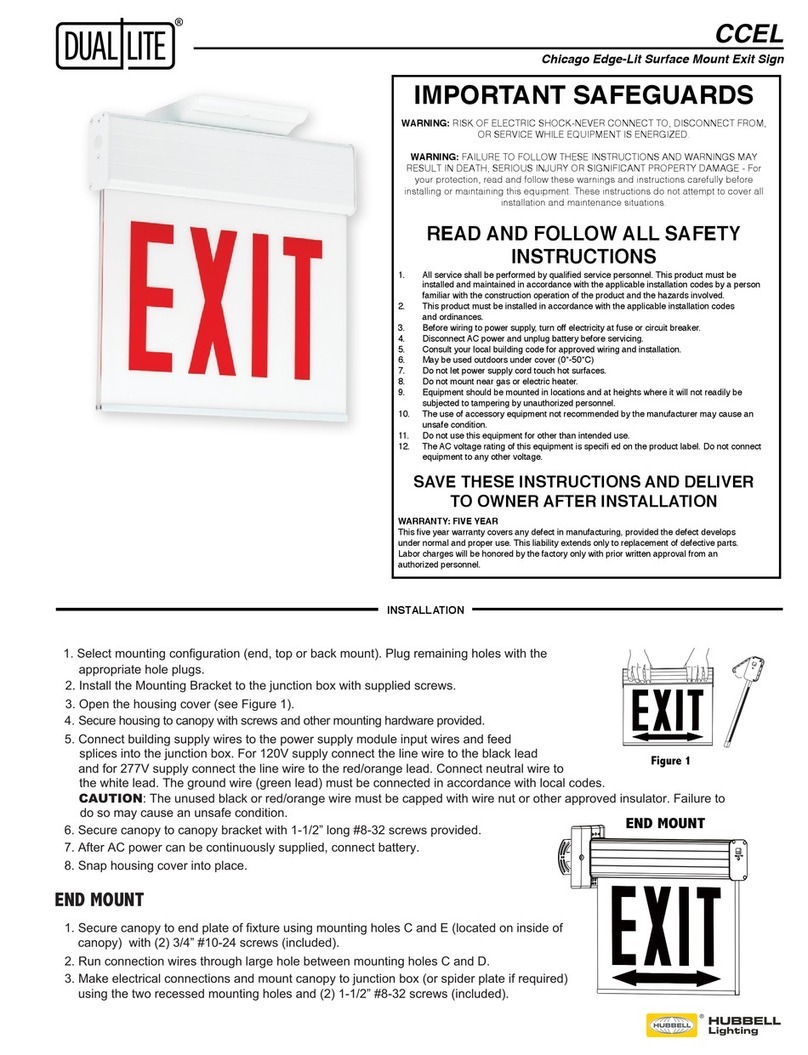
HUBBELL LIGHTING
HUBBELL LIGHTING DualLite CCEL Series quick start guide
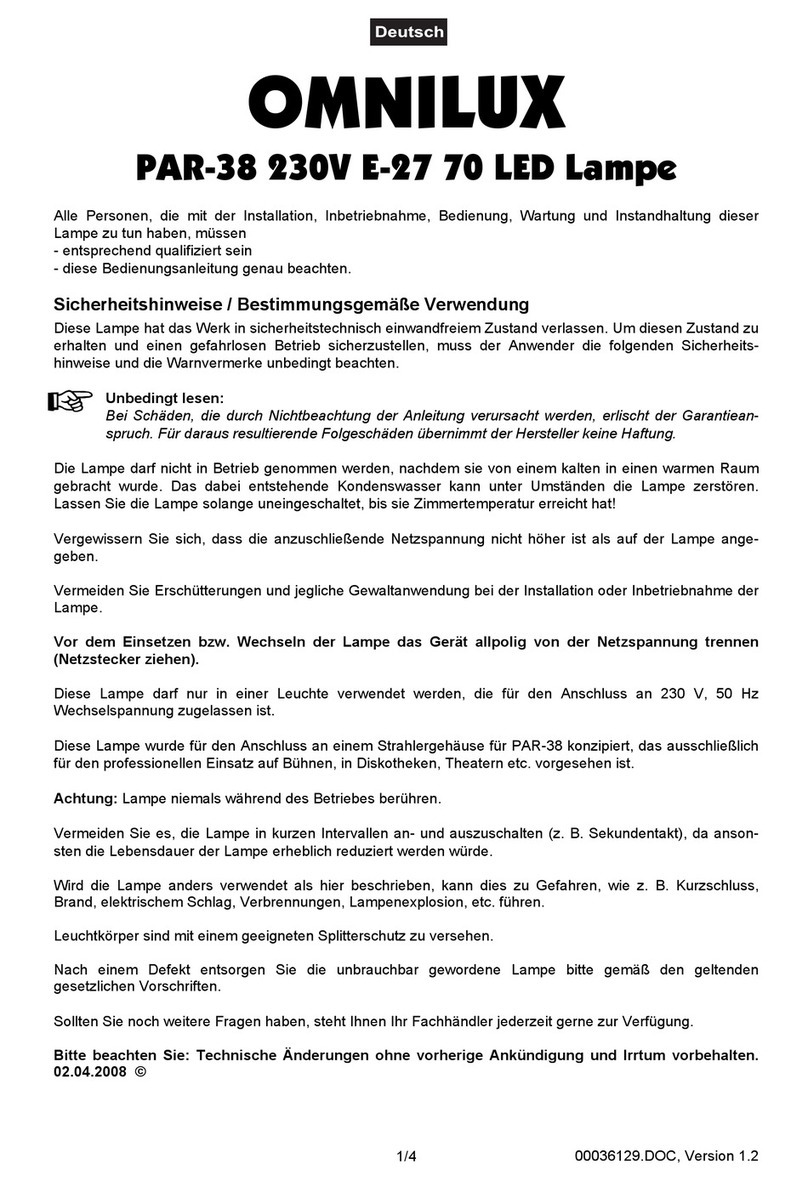
EuroLite
EuroLite OMNILUX PAR-38 230V E-27 70 instructions

Sealey
Sealey LED042 instructions
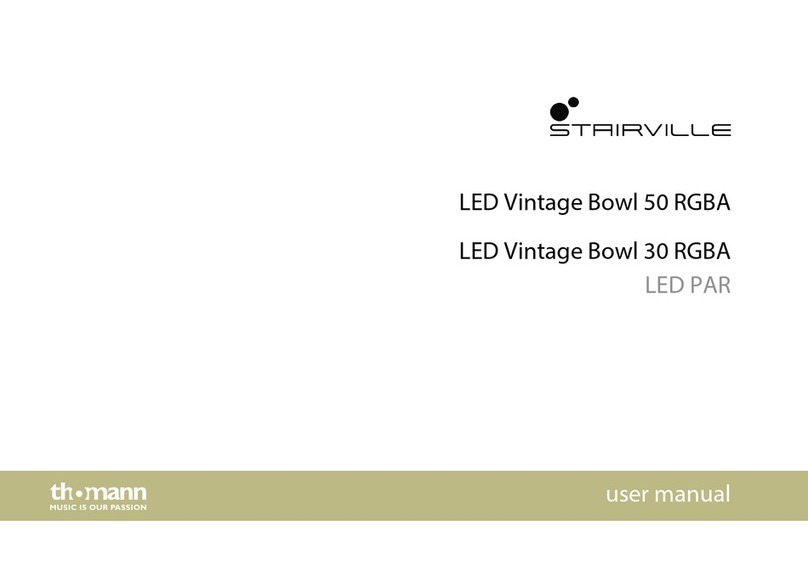
thomann
thomann STAIRVILLE LED Vintage Bowl 50 RGBA user manual

KOZii
KOZii KE1500BRVBCCT instruction manual
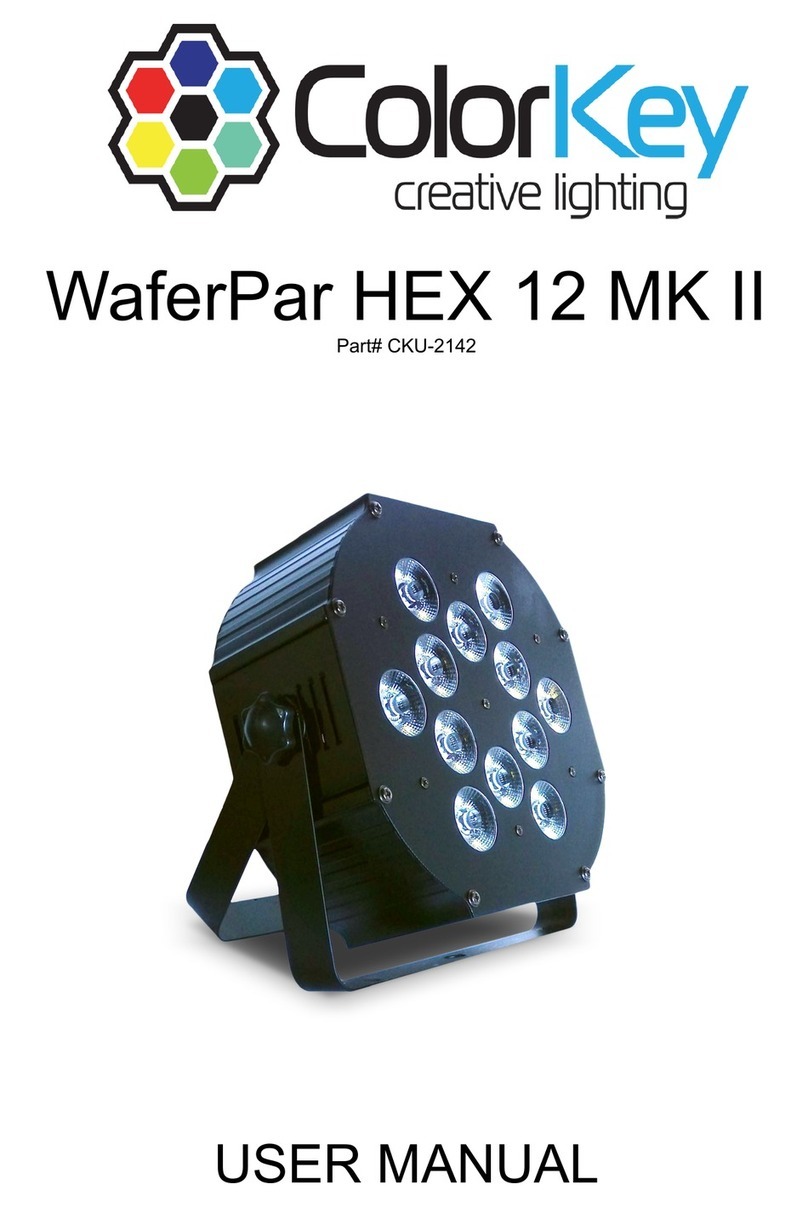
ColorKey
ColorKey WaferPar HEX 12 MK II user manual

Home Accents Holiday
Home Accents Holiday 1002 494 377 Assembly instructions
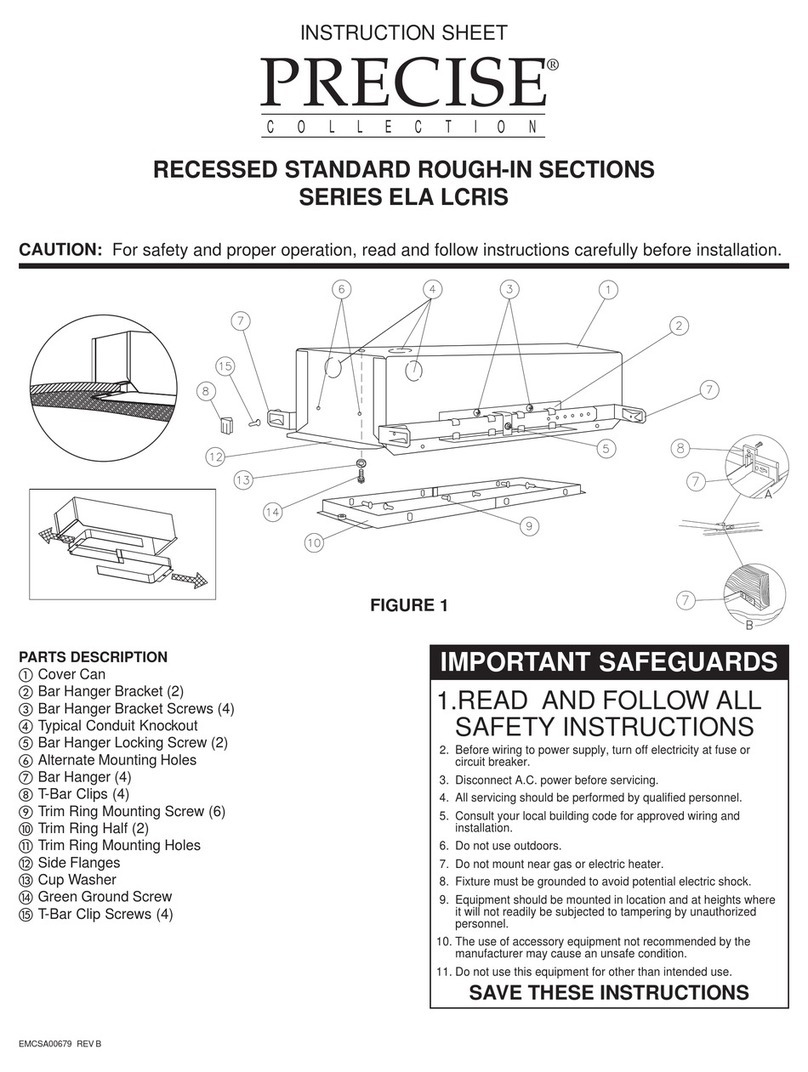
Lithonia Lighting
Lithonia Lighting PreCise ELA LCRIS Series instruction sheet
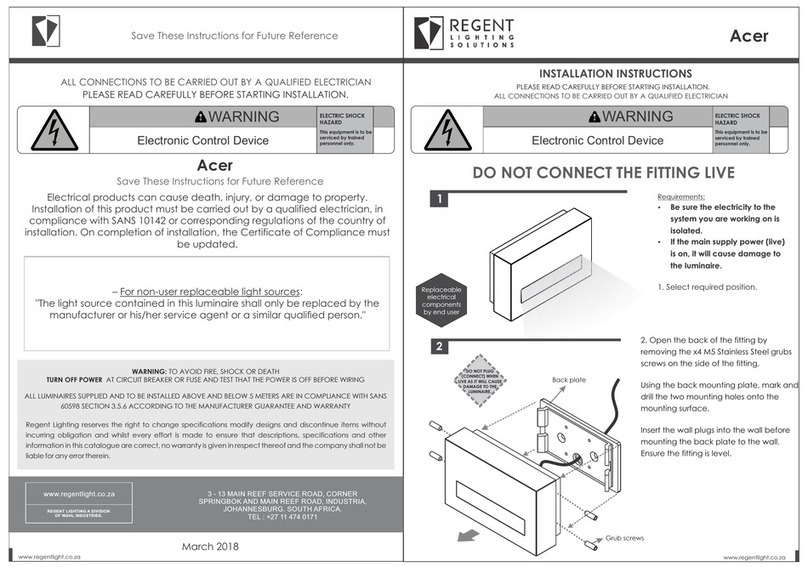
Regent Lighting Solutions
Regent Lighting Solutions Acer installation instructions
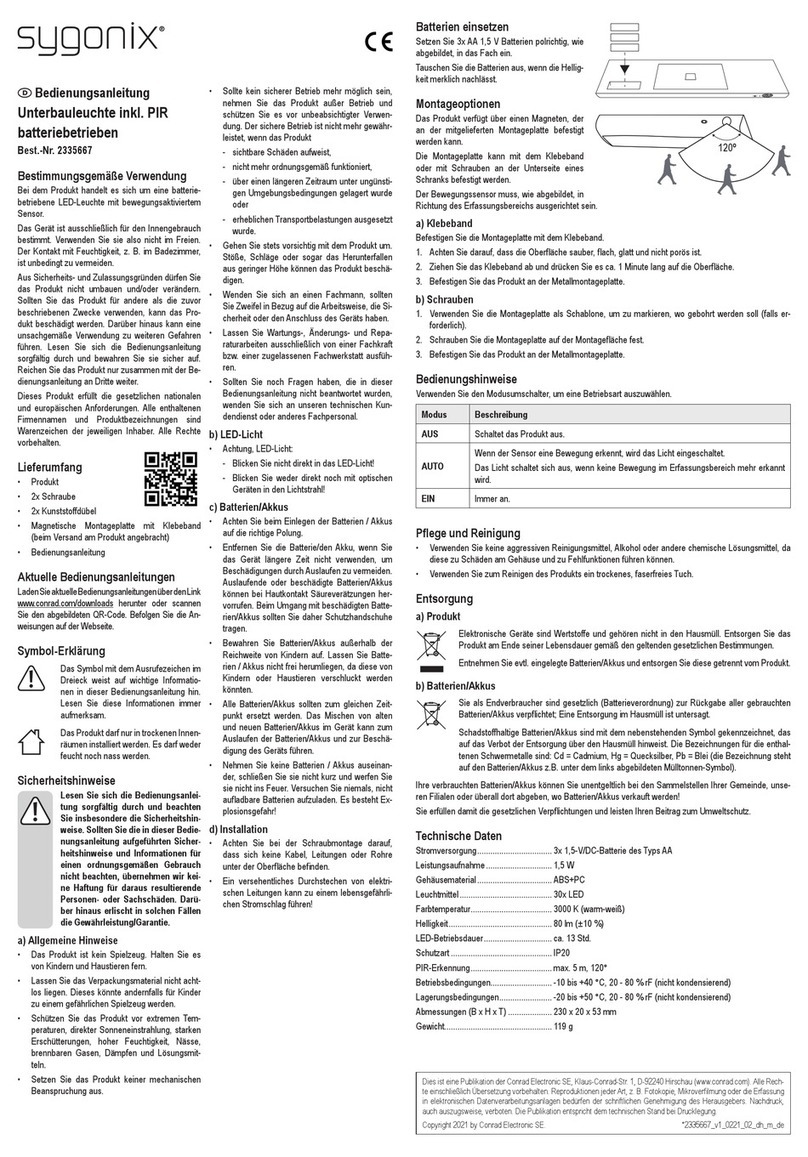
Sygonix
Sygonix 2335667 operating instructions
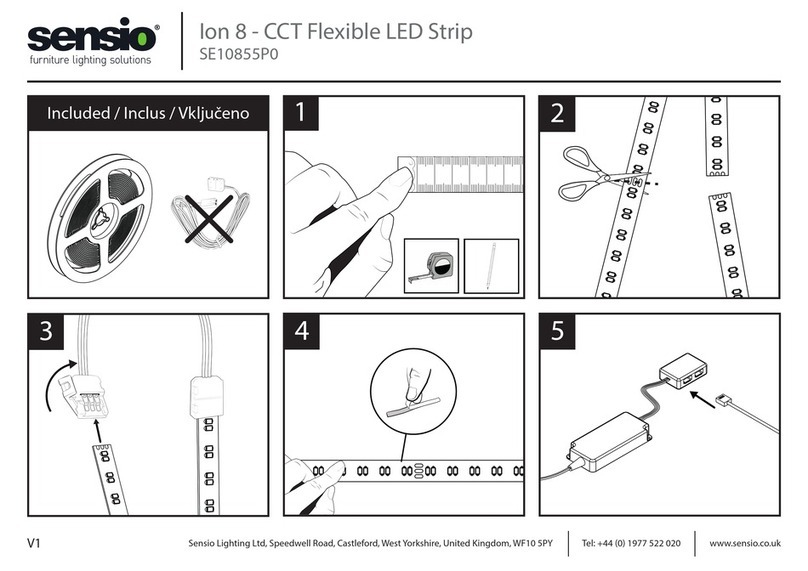
Sensio
Sensio Ion 8 manual
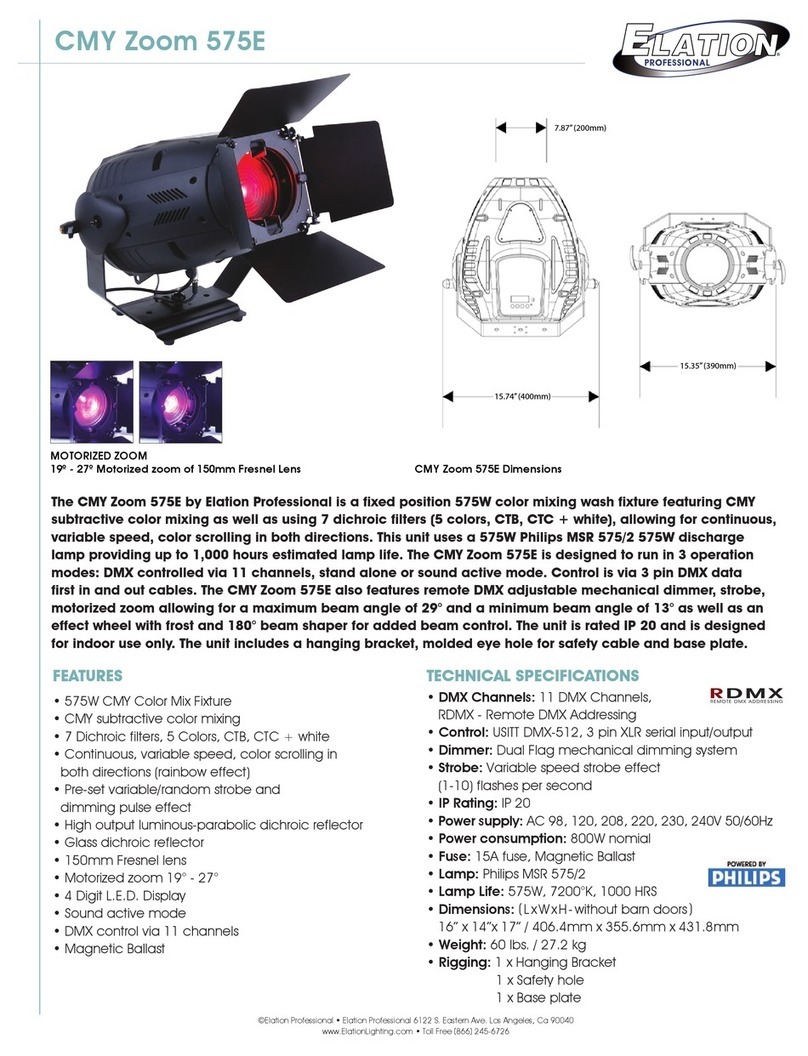
Elation
Elation CMY Zoom 575E Technical specifications
